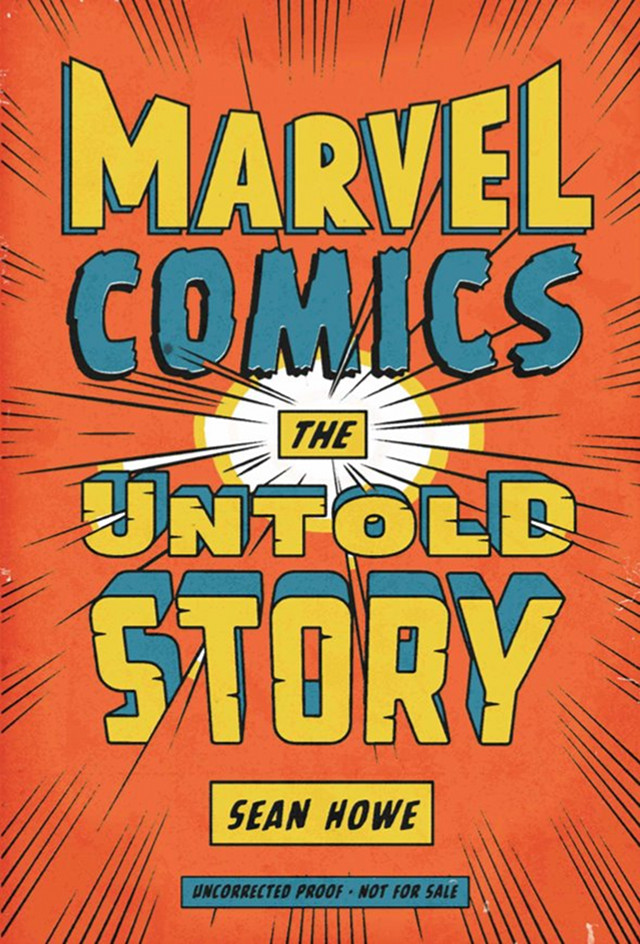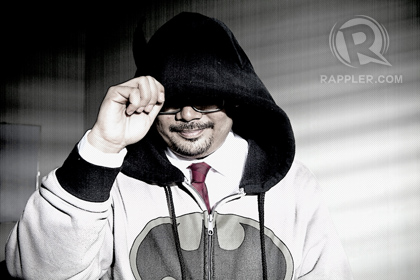SUMMARY
This is AI generated summarization, which may have errors. For context, always refer to the full article.

MANILA, Philippines – Fans of superhero comics would do themselves a favor by picking up this impressive tome. Those just interested in learning about where Marvel came from will find this a perfect entry point.
“Marvel Comics: The Untold Story” by Sean Howe traces the history of the comic book company that dominated the medium for a long time, and that now has made its mark in the Hollywood box office.
Howe starts the story with Martin Goodman and Timely, quickly progresses to Stan Lee, and then Lee and Kirby’s creation of the Fantastic Four, and then expands to show the development and evolution of both the Marvel universe and the storied bullpen that created it.
This might be a history book, but the way it is written makes it feel like an engaging piece of storytelling, filled with interesting anecdotes, detailed personal profiles of major players in the company and how their backgrounds feature in their contributions to the comics, and juicy bits of controversy.
For fans who don’t know the drama that happens behind the scenes of their favorite comics, this is eye-opening and might change the way you view them.
One of the main stances that the book takes is one in support of the artists who have been (and continue to be) short-changed by Marvel. While Marvel isn’t the only company guilty of treating its creators badly and not giving them their fair share — the story of Jack Kirby’s original artwork “disappearing” from Marvel’s storage facilities and then showing up for sale, with Kirby getting none of it, is one of the most well-known and appalling instances, and there are more — Marvel is so commercially successful with its properties now that it is criminal that creators are being cut out.
And while we all love the emphatic manner in which Stan Lee has been pushing books, and the way in which he helped to transform the medium with the many characters he co-created, the book also shows how Lee has been complicit in this.
Listen to an interview by Jeff Rubin with Sean Howe about the book:
The book doesn’t shy from showing all the bad stuff that has gone on. The terrible ways in which people were treated by Marvel, and the terrible things that people did to each other fill the pages. I found myself getting angry throughout as I read about the kind of decisions made that hampered creativity, or that shortchanged artists and readers alike.
I had moments of anger as I read about the way the company was run in the ’90s, during the time of the comics speculation bubble. The company and its superstar creators like Todd McFarlane and Rob Liefeld were out to cash in on fanboy enthusiasm, quality of storytelling be damned. Sean Howe shows us the thinking that went behind the madness, and how the company eventually tries to recover reader trust after it.
“The Untold Story” works well, though, because despite its digging up and bringing to light all of the dirt of Marvel, it is still written from a perspective that clearly loves the work. It is clear that despite the disapproval of all of the wrong, there is still love for the comics. Underlying the pointing out of faults is a clear hope for these things to be better.
It also goes over the major storylines and movements in the Marvel Universe, showing how these mirror creator concerns, social milieu and changing aesthetics. I found myself wanting to delve into the back catalog and read through many of the books he mentioned. Though Howe disapproves of some of behind the scenes drama, he sure knows and loves his comic book stories.
He makes us want to read them, too.
This book provides a model for how I would like history books to read: it writes its stories with a sense of urgency and excitement, as if it can’t wait to tell you what happens next. It takes what could potentially be a list of names and titles and turns them into people that we care about and books that we would be excited to read.
At the end of the book, it left me wanting two things: first was a DC book written in the same manner; second was a continuation that would chronicle what Marvel is doing now.
I wanted the book to keep going. – Rappler.com
You can also read:
- Beyond the cliche: Women in comics
- Filipino Heroes League Book 2: ‘The Sword’
- New Avengers and juxtaposition
- Superman vs Iron Man: From comics to film
- Pax Romana: Timely and striking
- Comic book history the fun way
- Comics writing 101
- Are you ready for ‘Man of Steel’
- More than Mark 42: Iron Man comics to read
- FCBD 2013: Long lines and love for comics
- Comics, costumes, crowds: Summer Komikon
- Why don’t we pay artists more?
- A collector speaks: Comics commitment
- Marvel Unlimited: Navigate the universe
- Free Comic Book Day 2013: Comics overload

Carljoe Javier teaches English and Creative Writing at the University of the Philippines Diliman, but what he would really like to do is spend the whole time in the classroom talking about comic books. He studies pop culture like comic books, film, and other forms of new media. He wishes he could fit into a superhero costume.
Add a comment
How does this make you feel?
There are no comments yet. Add your comment to start the conversation.